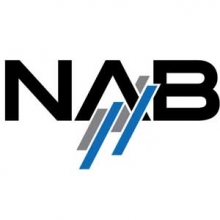
Désolé, cet article est seulement disponible en Anglais Américain. Pour le confort de l’utilisateur, le contenu est affiché ci-dessous dans une autre langue. Vous pouvez cliquer le lien pour changer de langue active.
In the run-up to MCW 2013, we interviewed Lonnie Schilling, newly appointed CEO of Swedish software company Birdstep Technology, that provides smart mobile connectivity and security solutions.
CTOIC: What do you see as the key theme for MWC in 2013?
Lonnie: Well as in previous years, there are going to be many themes in 2013, but a reoccurring theme, and perhaps the greatest challenge for operators is keeping up with subscriber demand, staying ahead of the bandwidth curve driven by more video rich content and ensuring a compelling user experience for a wider demographic customer base.
CTOIC: How have operators been responding?
Lonnie: Not always in the best way! It seems that data caps have come back into play, but this is wholly counterproductive and fails to take account how customers want to use their mobile phones. Mobile subscribers are consuming more and more data and watching longer forms of video but these caps are self-defeating in such that customers believe that consuming data implies incurring punitive charges or data throttling which make the service non-compelling. So the real challenge for operators is to come to grips with complementary technologies like Carrier WiFi and Smart Data Offload solutions, and align this with their business needs to meet the requirements of their subscribers.
CTOIC: But hang on, I thought LTE/4G was supposed to solve this bandwidth crunch?
Lonnie: Yes LTE does bring efficiencies over 3G and certainly more bandwidth, but the business case for the necessary coverage and density is prohibitively expensive. Here too Carrier WiFi is being used as a cost efficient solution for offloading. MNO's are now beginning to take advantage Smart Data Offload solutions to selectively offload non-premium data, perhaps a YouTube video, to WiFi while keeping premium data, such as a video subscription service like Netflix or Webex on the cellular core to leverage existing Subscriber Management services. In addition to smart selective offload, the MNO is interested in using subscriber analytics to better understand the Customer Experience from the perspective of the handset. The analytics give insight into what services are being consumed over WiFi and cellular, where the subscriber is when they consume the services and the quality of the service is, both objective and subjective. This resolves a key concern MNO's have had with WiFi; the operator now has complete visibility of the subscriber and service whether the user is on cellular or WiFi.
CTOIC: Presumably you agree LTE/4G does at least scale to the higher bandwidths required for emerging services, even if the costs are high?
Lonnie: I would argue that LTE has not kept up with the bandwidth curve. Just look at how smartphones are being used to consume more video. Did you know that it is expected that 2/3 of the world’s mobile data traffic will be video by 2016 or that globally, the average mobile connection will generate 1,216 megabytes of mobile data traffic per month in 2016, up 1,221% from 92 megabytes per month in 2011, a CAGR of 68%! This trend shows that the rate at which data consumption is growing, continues to outpace the rate at which mobile technology, including LTE, can deliver bandwidth. So here’s the telling data point, LTE gives us roughly 12x increase in bandwidth over 3G, but bandwidth growth over the period since LTE began development has gone up 30x. And, according the Cisco, the problem further exacerbates over the next few years. LTE is behind the curve when the market is demanding greater bandwidth.
CTOIC: So what is the answer?
Lonnie: I believe MNO’s must be more pragmatic about augmenting their mobile service offering with Carrier WiFi, in conjunction with Smart Data Offload solutions. By deploying an intelligent offload solution, the MNO can become much more innovative in how they package and tariff the service and effectively compel their customers to consume more instead of less. By associating network policy with the intelligent offload solution, the MNO decides which applications will be transported via cellular or WiFi determined by time-of-day, location, quality of connection or user policy profile. The point is that the MNO can be completely agnostic to the access medium for a greater aggregate RAN capacity, or develop innovative business models for maintaining premium traffic on the cellular and non-premium traffic over WiFi. Standards such as Hotspot 2.0 and ANDSF enable the automated network discovery, selection and security, as is done today in cellular networks. Then link this to the ability to have real-time active / passive analytics for the MNO to maintain a very clear perspective of the customer experience, even when using WiFi, and the MNO maintains the control of the experience associated with their brand and offering. It is not a huge leap in faith to foresee in the very near future that a customer can globally roam and handoff between cellular, WiFi and back to cellular based on a defined network policy.
CTOIC: How quickly do you anticipate this happening?
Lonnie: It’s already begun! But fact is that it will happen much faster than it did for the cellular industry, which took 30 years to get to where we are today with transparent international roaming where subscribers are unaware of all the transactions between operators taking place in the background. All that complexity is completely shielded from the user even though their own handsets are participating in the transactions. I believe the “Law of Accelerated Returns” tells us that it may be up to an Order-of-Magnitude less time than it took for cellular. Besides, the hotspot infrastructure is already there or under construction, and of course the industry understands well how to develop and negotiate roaming agreements.
CTOIC: Presumably cellular operators will not offload all their data. What data will they keep on their own infrastructures and how will that decision be made?
Lonnie: That will vary between service providers. But one thing they will all want is the ability to make intelligent decisions in real time over what data to move according to business rules and perhaps traffic conditions. Those decisions will be made by policy and executed in Smart Offload software that understands the subscriber, the data, the location and time-of-day and can offload according to specified rules.
CTOIC: What might those business rules be?
Lonnie: A service provider network might be getting a lot of You Tube traffic that is filling up the cellular network, and that could be offloaded to Wi-Fi. But say that operator has a contractual relationship with another OTT provider like Netflix that requires guaranteed QoS and the ability to monitor the activity. Then Netflix traffic would be kept on the cellular network and use the subscriber management capabilities there.
CTOIC: How will Wi-Fi be integrated with cellular?
Lonnie: That is still subject to debate. There are various options on the table, with some advocating running Wi-Fi in parallel with the cellular infrastructure and others who believe cellular and WiFi to be converged in the Packet Core. Regardless of the level of integration, I think it likely that operators will want to adopt a hierarchical structure where WiFi is implemented into the small-cell architecture and provides bandwidth and coverage in high-density venues and in-doors.
CTOIC: Thanks Lonnie, let’s see what MWC 2013 has to answer in this debate.
During Mobile World Congress 2013, Birdstep is located in hall 7, E80, within the Swedish Pavilion
Lonnie Schilling
Chief Executive Officer, Birdstep Technology

Schilling brings 20 years of experience of equity investment, strategic business development, architecture sales and marketing within the international communications market. He was most recently Director, Mobile Service Provider Sales & Business Development at Cisco and he has also held leading management positions in other global companies such as Motorola, ITT, Worldview Technology Partners, Bolt Beranek and Newman (BBN). Schilling holds a B.S. in Computer Science from the University of Maryland. He completed graduate and postgraduate studies at the Swiss Federal Institutes of Technology, the International Institute for Management Development, INSEAD and the Marshall School of Business at USC.



